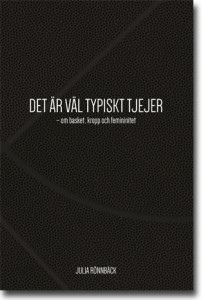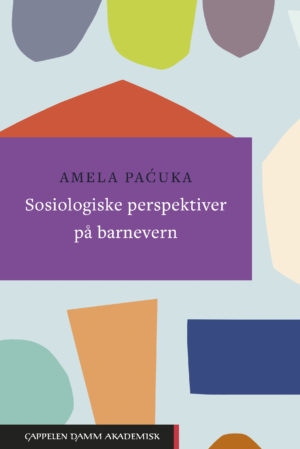
Det är väl typiskt tjejer : om basket, kropp och femininitet
Det är väl typiskt tjejer : om basket, kropp och femininitet
Kategorier: Basket Bollsport Genusvetenskap Genusvetenskap: kvinnor och flickor Idrottstränare och coachning Idrottsvetenskap, idrottsundervisning Samhälle och kultur: allmänt Samhälle och samhällsvetenskap Sociala grupper Sport och idrott Sport, idrott och friluftsliv
Varför talar baskettjejer ofta om kropp, och vad menar de när de använder ordet ”biff”? Varför viker de upp shortsen innan matcher ska spelas, och vad gör de mer i omklädningsrummet? Varför ska inte benen vara korsade på bänken i anslutning till match, och vad händer om de korsas?
Det är väl typiskt tjejer – om basket, kropp och femininitet riktar blicken mot dessa frågor. Bland baskettjejer och i studien är kroppen central, kropparna knuffar på såväl andra baskettjejkroppar som innebörder av femininitet inom idrott. För tjejerna och i studien är också de idrottsliga rummen viktiga; deras förhandlingar av genus sker i och mellan idrottens rum och i rum utanför idrotten, på sätt som glider in i och ömsesidigt påverkar varandra.
English abstract:
The aim of this dissertation is to analyse how a group of female basketball players – aged 15 to 18 and located in one of Sweden’s largest cities – construct and negotiate gender and femininity through bodily and verbal practices. The study is grounded in poststructuralist theories – primarily using the theoretical work of the philosophers Judith Butler and Michel Foucault. The methods used are qualitative: participant observations, interviews and written dialogues via Facebook. The writing method used is ethnographic fiction.
The first part of the analysis shows how the female basketball players frequently talk about appearance and also how they repeatedly talk about the fleshier matters of the body – such as muscles and fat. These recurrent verbal practices are parts of the processes through which the girls construct gender and femininity, and a way of exercising relational power. The girls themselves explain their frequent talk about body and appearance as something “typical” for girls and thus they use a discourse that circles them (as young women) in order to make themselves understandable.
The second part of the analysis depicts how the female basketball players – in the locker room – before every game construct similar and socially recognizable female bodies. These recurrent bodily practices are further parts of the processes through which the girls construct gender and femininity. Additionally, in the second part, the analysis show how the female basketball players – through verbal and bodily practices – transform gender and convert femininity within sport and also how they, in game situations, embody two different discourses: “Girl Power” and “the insecure (sporting) girl” that encompass young (sporting) women.
One conclusion in the thesis is that discourses that surround young (sporting) females appear to be central in their creation of gender identity. Furthermore, the (sporting) girls are active participants in the ongoing debate regarding what (sporting) girls are, can be and should be.
JULIA RÖNNBÄCK (f. 1983) är verksam som idrottsforskare vid Malmö högskola.






